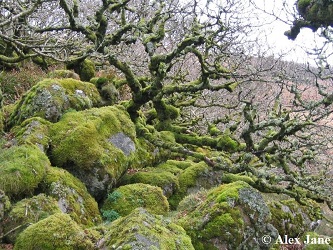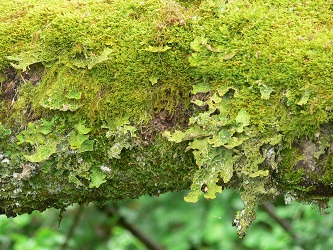Current ISIS code: A215
Previous assemblage name: Not applicable
Linked assemblage: Often in association with the other saproxylic assemblages A213 fungal fruiting bodies, and A221 bark & sapwood decay.
Description of habitat typically supporting the assemblage: This small assemblage type is mostly characterised mainly by bugs and moths.
This assemblage type is found on the surface of trunks and branches of trees and shrubs. It includes grazers of epiphytes such as algae, lichens and mosses, as well as their predators and parasites. Some epiphyte feeders are also found on epiphytes growing on rocks and boulders.

It would benefit from a greater sampling pool, especially in consideration of the geographic differences in lower plant representation across the UK.

Potentially important environmental impacts
The effects of nutrient enrichment by aerial pollution and of the cessation or introduction of coppicing are unknown.
Sampling & assessing the assemblage
Standard sampling protocols apply.
Target groups: Heteroptera, lepidoptera
Fieldwork methods: Beating & targeted search, through inspection
Alternative methods: Suction sampling off of tree boles may be effective, though only smaller units would be manoeuvrable enough
Season: Late Spring - the “Hawthorn flowering window”, High Summer & Autumn.
This assemblage has tended to be found as part of the 3 sampling period survey framework used for more core saproxylic assemblages.
